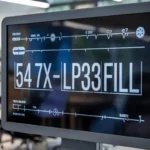Effective communication can determine the success of a business deal. During the contract negotiations phase, good communication determines if the deal ends in frustration or satisfaction. Contracting is about more than just documents, signatures, and the terms of the deal. It is about the people involved. The dynamic is either friction or harmony, based on how people communicate and listen to each other.
Good communicators understand that negotiation is more about mutual understanding than winning. It is about successfully transforming complex, even contentious conversations, and building collaborative partnerships.
The Importance of Communication in Contract Negotiations
Negotiating contracts is about contract negotiations. Contracts consist of communication that addresses and helps align differing priorities. Communication can transform even the most positive and well-intentioned agreements. It is essential to understand objectives, expectations, and other negotiation terms for each party involved.
Communication can also cause or contribute to relationship deterioration, delays, and even the opening of litigation. Negotiation over the scope of work, costs, or any other critical variables in a deal will increase trust.
Professionals who operate negotiations maintain a collaborative tone and a communication style of empathy combined with active listening. Communication fosters collaboration from the start and facilitates the negotiation process. A positive collaborative tone promotes agreements that truly deliver mutual value to all parties.
Identifying Key Stakeholders in Contract Negotiations
Knowing who has a voice in contract negotiations will help facilitate conversations. Stakeholders in contract negotiations do not only consist of the decision-makers but also those who will be directly affected. These can be executives, department heads, or project teams who rely on the contract for day-to-day functions.
Stakeholders will have varying priorities, and including every perspective and goal is vital to communicating effectively. For example, the project manager will have a different set of priorities than the financial officer. The project will be of utmost importance to the project manager, while the financial officer focuses on saving funds for the firm.
Prepared communication eliminates any last-minute surprises and guarantees that every attendee will be satisfied. This, in turn, saves everyone time and makes the negotiation process as a whole more efficient.
Keeping communication open will help form positive relationships with stakeholders. Demonstrating the importance of their contribution is vital. This not only improves your negotiation stance but also demonstrates accountability and professionalism.
Strategies for Building Rapport and Trust
In contract negotiations, trust and rapport are fundamental to the success of the negotiation. When both parties feel understood and their perspectives have been accepted, a compromise becomes easier to implement.
Find common ground first. Recognize the demands of the other side and understand where they are coming from. This establishes a basis of mutual respect.
Trust requires reliability. When promises are kept and honesty maintained, credibility is solidified. When trust is developed early on, negotiations are less of a challenge and more of a team effort.
Your tone and body language are equally important. Gentle, calm body language will be perceived more positively. The language of those in a trusting relationship is clearer.
Active Listening Techniques for Better Outcomes
Effective communication is primarily about listening. Active listening in a contract negotiation scenario allows you to figure out what the other side may be masking, such as hidden motives, concerns, and priorities.
Full attention is given when someone is making eye contact, not interrupting, and nodding. Listening is a sign of respect. Engaged speakers will use reflective statements such as, “I understand your concern about delivery time”, or “It sounds like cost efficiency is your top priority.”
This technique improves understanding and strengthens relationships. When individuals know they are acknowledged and appreciated, they feel significant. Confidence improves on both ends because active listening decreases the likelihood of misunderstandings.
And don’t forget, silence can be a strategy too. Giving the other party a chance to think and talk can lead to insights we may not have considered.
Clarity and Precision in Language
Words are important. During contract negotiations, failing to use clear and precise wording can lead to costly misunderstandings. This is why the use of clear and precise wording is important.
Don’t use jargon, and don’t be vague. One must use clear and direct language with no possibility of multiple meanings. Instead of saying “should” or “may,” say “will” and “must” to give clear direction.
Clearly outline and summarize the key talking points, then circulate a written copy. This written record is valuable to ensure that there is a common understanding of the terms.
Using clear and precise language improves understanding, saves time, and shows professionalism and empathy to the other party.
Managing Conflicts and Misunderstandings
Even during contract negotiations, some form of disagreement is expected. Often, conflicts arise from misunderstandings around pricing or deadlines, but problem resolution distinguishes a good negotiator from an average one, particularly when handled with empathy.
During contract negotiations, one of the best steps a negotiator can take is to calm high emotional tensions within the problem discussion. An emotionally charged atmosphere impedes reaching any form of mutual agreement. If people become overly emotional or defensive, dig to the root to get agreement. Propose a positive problem statement to stimulate primary problem area discussion. Consider using “What other problems will help get an agreement?”, “What will it take to get an agreement?”
Defensive posturing creates emotional reactions, proving it to be ineffective problem resolution. Engage defensive-posturing participants to suggest a solution. A summary of concerned issues, from root to solution, will give a sense of the whole problem, fostering a problem-solving, collaborative atmosphere.
Effective Use of Technology in Modern Negotiations
The tools of negotiations have changed thanks to modern technology. Remote meetings enable negotiations to span different cities, and collaboration tools enable negotiations to cross continents. Remote document and meeting tools have greatly enhanced negotiations, particularly contract negotiations.
These tools provide facilitators with enhanced problem-solving opportunities to address issues of inefficient communication. For example, facilitators can avoid document swapping with version control or automated hand-off of contracts.
—Remember, while technology offers many options, we should prioritize human interaction, building relationships based on trust, and meeting emotions face-to-face, even if we can Zoom or chat via Teams.
The combination of technology and human intuition always offers wonderful results.
Conclusion
The key element of successful contract negotiations is communication. Every facet, from identifying important people and actively listening to the choice of words, affects the outcome in a big way.
Negotiations change from winning a point to establishing a partnership when both sides see the issues from the opposite perspective. Good communicators understand that results come from pressure, coaxing, and manipulation—sometimes we have to let go.
Trust, in all its forms, will improve every part of your negotiations. You can improve every aspect of your negotiations by building trust, using technology, and working in an atmosphere of openness.
Understanding drives every successful partnership and every successful agreement. For the best support and insights on managing communication in your negotiations, connect with Indigo Billing, where professional communication meets billing.







